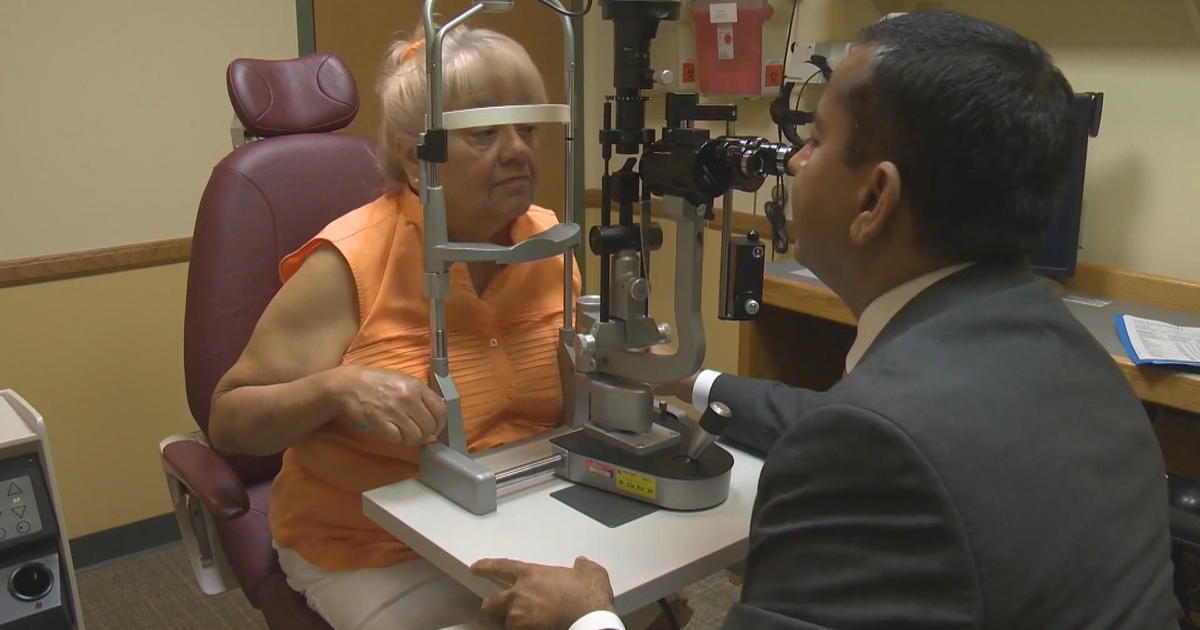Tips For Runners, Just In Time For Philly's Broad Street Run
If you're planning on running in May's iconic Broad Street Run, experts from Einstein Healthcare Network, which is producing the event's Health and Wellness Expo, have some tips for getting your body in tip top shape.
NUTRITION
Theresa Shank, an Einstein Healthcare Network Dietitian, shares her advice for both pre- and post-workout fuel.
1. Drink at least 8-16 oz. of water about one hour before your workout.
2. Consume a carbohydrate-rich snack before exercising. Adding protein such as a spoonful of almond butter or string cheese to your snack will keep you going. Aim to consume a snack about 30 minutes before you work out.
3. The portion size of your pre-workout snack needs to be in proportion to the amount of energy you're going to be exerting. For example, competing in the Broad Street Run, a 10-mile race, requires a full meal with at least 50 grams of carbohydrates two or three hours before you run, and a snack with at least 30 g of carbs about 30 minutes before the race. Snack suggestions include a small piece of fruit or a sports drink.
4. Choose pre-workout snacks that are low in fiber and fat to ensure proper digestion.
Some good pre-workout snacks:
o 6 ounces of Greek yogurt with 10 almonds and ½ grapefruit
o 2 slices of whole wheat bread with 1 tbsp of peanut butter and 2 tsp of fruit preserves
o 1 hard-boiled egg, a slice of whole wheat toast and a small piece of fruit
o ½ cup trail mix (cashews, dried craisins or raisins, almonds, walnuts etc) and 1 low-fat string cheese
o 1 English muffin or Martin's Whole Wheat Potato Bread with ½ of a banana and 1 tbsp of almond butter
o Low-fat string cheese with 12 whole-grain crackers and 10 grapes
Snack suggestions for after you exercise:
Try to eat a small snack with a 4:1 ratio of carbs to protein within 15 minutes of your run. Then, within two hours after your run, eat a meal.
o 1 banana, 1 cup almond or soy milk, 1 tbsp peanut butter, and a dash of cinnamon
o 1 medium sweet potato with a lean protein (3 oz chicken breast or fish)
o 20 almonds with a low fat cheese string and a piece of fruit
o Hummus with apple slices and 1 slice of whole-wheat bread
o 1 cup oatmeal with 1 tbsp peanut butter and ½ frozen berries
o 8 ounces of Greek yogurt with 1 piece of fruit
o 1 Martin's Whole Wheat Potato Bread with 2 slices of Turkey and 1 slice of reduced fat cheese
SUN PROTECTION
Sun damage and sunburns are an unfortunate side effect of working out outdoors. To help you stay safe in those rays, Einstein Medical Center Montgomery County dermatologist Dr. Jonathon Wolfe has some advice.
1. Obviously, you must wear sunscreen. Apply it at least 30 minutes before you run, even on cloudy days.
2. Dermatologists recommend an SPF 30 or 45, with reapplications every 2 hours or so.
3. Look for sunscreens that indicate broad-spectrum (UVA and UVB) coverage and are sweat-proof or water-resistant – you don't want sunscreen running into your eyes during your workout!
4. Choose a sunscreen that's easy for you to apply. Remember that spray formulas evaporated once they hit the air and aren't your best bet in certain conditions.
5. Don't forget chapstick with sunscreen and wear a hat or cover your head if you have thinning hair.
RACE DAY TIPS
Einstein's orthopedic surgeon Minn Saing, MD, is the Broad Street Run's Medical Director. To prepare you for the race, he's offering some tips.
1. Eat breakfast. Start the day off with oatmeal or something similar two to three hours before the race.
2. Don't wear new shoes – you don't want to have blisters around mile three!
3. Consume carbs during the run, if possible.
4. Stay hydrated. If you can, walk through the drink stations rather than running.
5. Pace yourself. A good rule is to aim to run the second half a little faster than the first.
6. Avoid skin breakdown by using petroleum jelly in sensitive areas like the underarms, nipples, groin, and thighs and under breasts.
7. Don't sit or lay down immediately following the run. Try to keep moving for a little while so that the blood doesn't pool in your lower legs, causing more soreness or injury.
8. Eat protein, such as peanut butter, shortly after the race to refuel.
9. Enjoy yourself!
CORE STRENGTH TRAINING FOR RUNNERS
Since your core is just that – the center of your body and its movements – you need to make sure you're in shape to avoid injury. MossRehab Sports & Spine Rehabilitation specialist Jeff North, MD, recommends core training, especially for distance races such as the Broad Street Run.
Dr. North recommends consulting a personal trainer, physical therapist or other medical specialist to make sure you're doing these exercises correctly and to help you with your strength and exercise program. He also adds that a core training program should progress from "open-chain" (or non-weight bearing) exercises towards "closed chain" (or weight bearing) exercises in order to train muscles as they are normally stressed. Since your body is erect with weight bearing and landing on your legs when running, strengthening exercises should imitate this pattern.
Some examples of core strengthening exercises for runners include:
Initial Phase
o Bridges
o Side-lying clam shells
o Bird-dogs
o Planks (prone planks and side-lying)
Closed-Chain and More Advanced
o Side steps or walking with resistance band (band wrapped around ankles)
o Hip hikes and/or single leg step-ups/step-downs
o Squats
o Lunges
o Single leg squats (pistol squats)
o Chops, reverse chops, lawnmower pulls with cable or resistance band
o Progress from double leg to single leg
Advanced and sport-specific
o Multiple plane running – backwards, side step, cariocas, ladder drills, etc.
o Plyometrics – jumping and landing drills
OVERUSE AND INJURY PREVENTION
Minimize your risk of injury with these tips from Einstein orthopedic surgeon Dr. Bobby Ndu.
1. Make sure to stretch. Stretching increases the flexibility of your muscles.
2. Make sure your shoes are well-cushioned and comfortable. If you have low arches, choose shoes that provide support in both the front of the shoe and under the arch. People with high arches should wear shoes with more cushion under the front of the shoe and the heel.
3. Make sure to wear running shoes rather than cross-trainers.
Common running injuries include:
-Ankle sprains
-Stress fractures
-Muscle soreness
Most common foot and ankle injuries seen in runners:
Ankle sprain
Achilles tendonitis
Plantar fasciitis
Stress fractures
Toenail injuries
RUNNING WITHOUT INJURY
Dr. Saing, the medical director for the Blue Cross Broad Street Run, urges runners to be aware of the risks and how to avoid them. Runners are more vulnerable to injury during their first 4-6 months of training, or when returning to running after an injury. Longer distances and faster times can also be culprits. Dr. Saing also says there are some common errors runners make:
o Lack of adequate pre-running stretching
o Rapid changes in mileage
o Increase in hill training
o Interval training
o Insufficient rest between training sessions
o Running Shoes. Comfort is key. Consideration of wide toe boxes to accommodate your individual anatomy.
Furthermore:
1. Make sure to replace your shoes every 600 miles.
2. The ideal surface for running is flat, resilient and relatively soft – avoid concrete and rough roads. Try to use community running trails and avoid hills at first, as they can cause increased ankle and knee stress.
3. Increase fluid intake in warm weather. Weigh yourself before and after a run and consume any lost weight in water.
4. Wear the proper attire for the weather conditions, and avoid running in excessive heat or cold.
5. Check air pollution levels, as they can increase breathing issues.
6. If you're running at higher altitudes, make sure you let your body adjust.
If you do become hurt or injure, here's how to treat those pains:
1. Rest
2. Ice it to help with swelling and inflammation
3. Take an oral OTC or Rx anti-inflammatory
4. When you feel recovered, ease back into running with interval training
5. Wear a brace or a splint
6. If you experience severe pain, swelling, loss of motion or significant ambulatory dysfunction, consult a doctor ASAP



